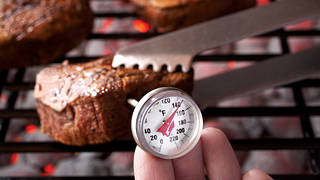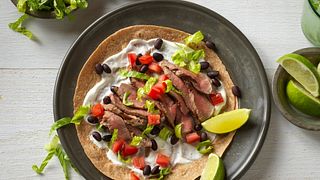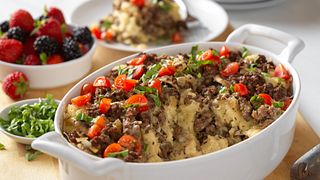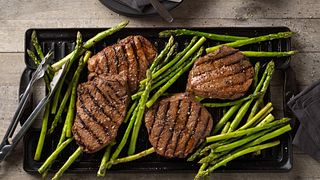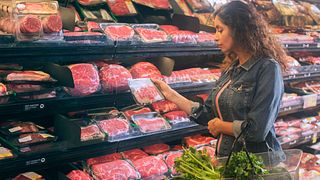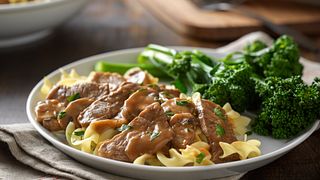Beef. It’s What’s For Dinner. Shares Tips For Beef Safety At Home
March 26, 2020
With more time at home, consumers can confidently reach for beef as a reliable staple to nourish themselves and their families. Beef is not only an excellent source of protein; it also provides bodies with the strength to thrive throughout all stages of life.
To ensure consumers are armed with knowledge to have the best eating experience with beef, the Beef Checkoff is here to provide some quick tips on how to safely handle and prepare beef when cooking at home.
Storing Beef:
- Refrigerate or freeze beef as soon as possible after purchasing.
- Ground beef can safely be stored in the refrigerator for one to two days before cooking or freezing. Once in the freezer, ground beef can be stored for three to four months before quality is impacted.
- Steaks and roasts can safely be stored in the refrigerator for three to five days before cooking or freezing. Once in the freezer, steaks and roasts can be stored for four to 12 months before quality is impacted.
- If you plan on freezing, repackage your beef into the right-size portion for upcoming meals.
- For longer storage, remove beef from original packaging and place into freezer bags or similar air-tight packaging to remove as much air as possible.
Defrosting:
- Defrost beef in the refrigerator, never at room temperature.
- Account for 12 to 24 hours to defrost ground beef and steaks.
- Use a plate or tray to catch any juices.
Handling:
- Wash hands well in hot, soapy water before and after handling raw meat and other fresh foods.
- Keep raw meat and juices away from other foods.
- Wash all utensils, cutting surfaces and counters after contact with raw meat.
Preparing:
- Always use a meat thermometer.
- Ground beef should be cooked to an internal temperature of 160°F.
- Steaks and roasts should be cooked to an internal temperature of 145°F.
- Don’t forget to refrigerate leftovers within two hours after cooking.
“Beef is a nutrient rich protein that can be a great freezer staple for a variety of dishes and meals,” said Alisa Harrison, senior vice president of Global Marketing and Research at the National Cattlemen’s Beef Association, a contractor to the Beef Checkoff. “With a few simple tips when it comes to storing, handling and cooking beef at home, families can feel confident that their beef meals will be delicious and flawlessly prepared.”
When you’re ready to get cooking, check out more information on safe handling, hundreds of recipes, and even online cooking lessons. With step by step instructions and tips for a dozen different cooking methods, from grilling to pressure cooking, the cooking lessons are a great resource for all levels of home chefs.
About the Beef Checkoff
The Beef Checkoff Program was established as part of the 1985 Farm Bill. The checkoff assesses $1 per head on the sale of live domestic and imported cattle, in addition to a comparable assessment on imported beef and beef products. States may retain up to 50 cents on the dollar and forward the other 50 cents per head to the Cattlemen's Beef Promotion and Research Board, which administers the national checkoff program, subject to USDA approval.
About NCBA, a Contractor to the Beef Checkoff
The National Cattlemen’s Beef Association (NCBA) is a contractor to the Beef Checkoff Program. The Beef Checkoff Program is administered by the Cattlemen’s Beef Board, with oversight provided by the U.S. Department of Agriculture.
